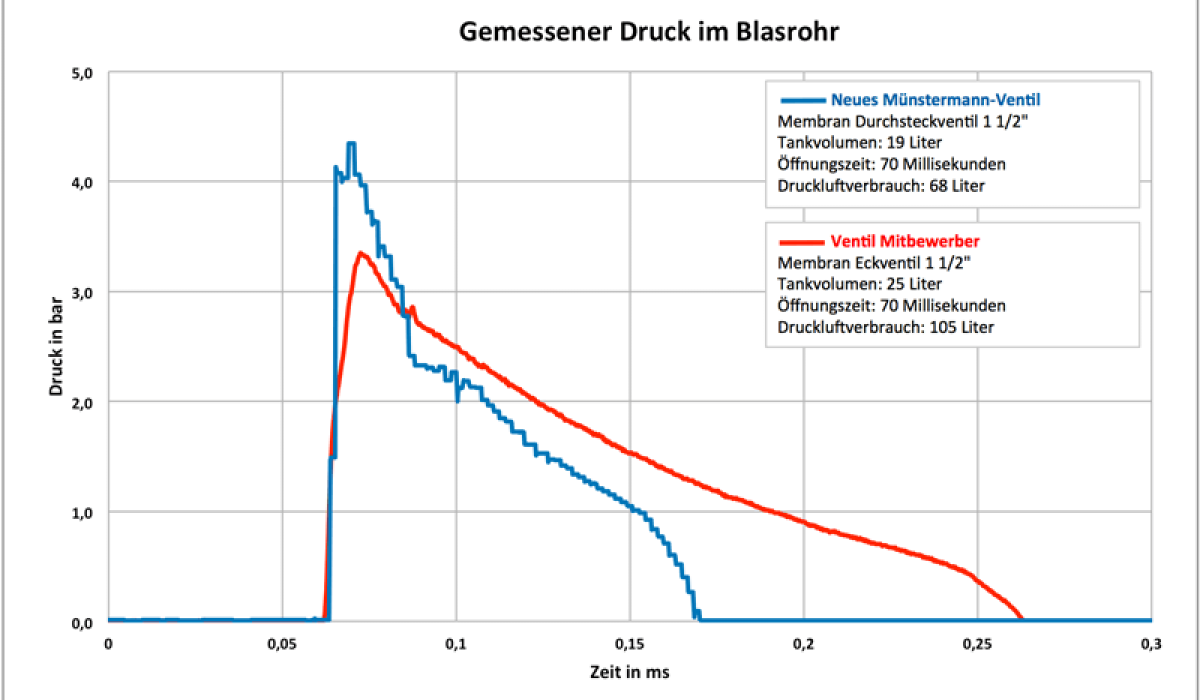The control of the pulses of compressed air in conventional filter units is often achieved by an almost firmly regulated, timed cleaning cycle, in which the intensity as well as the duration of the cycle is independent of the operating condition of the filter. In this case this is termed the continuous filter cleaning cycle.
Modern flexible control system
In the newer and, particularly, in the systems, dependent on capacity, the filter differential pressure in addition controls the regeneration. Impulse intensity and cycle times between the impulses remain constant. This differential pressure cleaning can also be combined with a variably controlled cycle time to ensure an even discharge of dust.
The pulse level is always kept constant when using the previously described types of cleaning. The new Münstermann control system is a demand-supply pressure controlled cleaning, in which the pressure pulse is continuously controlled over the available tank pressure. In combination with the differential pressure regulated cleaning a maximum saving of compressed air is possible. In addition the gentle cleansing process increases the service life of the filter media.
New tanks result in additional ernergy savings
Using modern tank systems with customized single and double-stage diaphragm valves reduces the requirement for compressed air and the cleaning pulse in addition is considerably improved. Essential for good and effective cleaning are the minimal losses in the compressed air system and the rapid opening and closing times of the valves. The graph shows real measurement curves of a compressed air impulse using conventional valves (red line on the graph) and with the new Münstermann valves (blue line on the graph). It can be seen that with significantly less compressed air consumption an even higher-pressure impulse in the blowpipe can be achieved.

